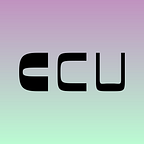Behind The Screens: Hellocatfood
An interview with Antonio Roberts, also known as Hellocatfood.
Antonio Roberts, aka Hellocatfood, is a creative coder making glitchy visuals and a mixture of dark ambient of techno. In this interview, we’d like to talk about his practices and tools, as well as work in the community and his upcoming activities.
What is live coding, what does it mean to you and how has it influenced your practice of making and thinking about art?
To me, live coding is performative coding. There’s something very intentional about choosing what to type, when to type it, and how to type it. For example, over emphasising each key press and choosing when to execute certain bits of code.
I have been making art using programming since around 2008, and in most cases I only show the results of the code (the rendered video or static image). Doing live coding has given me the chance to consider how to present the code and give an audience an insight into how the work is made.
Could you tell us what your first encounter with live coding was and what are your sources of inspiration?
My first full encounter with live coding was an Algorave in Gateshead in 2014. I had apprently been to an Algorave at Network Music Festival a couple of years before it but it was a bit lost for me amongst all of the other events!
As for influences I think in general I would say that noise influences me a lot. I was quite heavily involved with the glitch art community from around 2009 where of course we focused a lot on noise and its artistic qualities. This has definitely influenced how I approach live coding both visuals and music.
Do you have any preferred platforms and/or languages, how did you come to use them and do you have a specific reason for it?
For a very long time Pure Data has been my go-to tool for live visuals. When I first started using Linux in 2008 and was searching for tools that could replace proprietary VJing tools I was regularly reccommended to use Pure Data and the GEM library. So I learnt that and just stuck with it! In general I really like node based tools. They can get quite messy but I like that mess and it often reflects how I think and work.
I am definitely up for learning other tools — for example I’m finally learning shaders and delving more into javascript in 2022 — but node based tools and Pure Data are where I’ve felt most comfortable for a long time.
For music I’m mainly using TidalCycles. I’d seen it used at so many events over the years so it seemed like a good choice for a first music programming language to learn. I’ll eventually try Supercollider, Orca and even a DAW but for now I’m happy with TidalCycles and extending it with some lv2/vst plugins.
Are you part of a (local) community? How do you organize and do you share works or collaborate often?
Not necessarily. Since 2016 I’ve had opportunities to organise several performances and workshops around live coding. This has usually been through my affiliation with different cultural organisations. For example, the ones I organised at Vivid Projects in 2016 and 2018, and the Algorave at Supersonic Festival in 2017 happened through me being a Curator at Vivid Projects, and one at the Herbert Museum and Art Gallery in nearby city Coventry happened as I was an artist participating in an exhibition there.
It was great to be able to invite so many performers to the area, but sadly there isn’t a local self-organising community yet! As more people learn live coding in the local area I’m confident more people will start organising events and workshops.
In what forms are algorithms and randomness applied in your practice or performance? Do you try to pursue serendipity and how or why not?
I really like incorporating some element of randomness in my visuals. I definitely have a set of techniques which I regularly use (for example feedback loops) but I always like to add in some random number/variable generators to mess things up a bit!
For my music I’m not yet as well practiced so for the most part I do like to have everything structured and then vary various bits.
Do you have any recommendations for people who have not gotten into live/creative coding but are curious to give it a try?
Don’t worry about getting things wrong. There’s no right way to code and in live coding sometimes we discover new sights or sounds when the code doesn’t do exactly what we expect.
Could you share a sneak-peek into an upcoming project or something you are currently working on and very excited about?
(Algo|Afro) Futures is a programme for early-career Black artists based in Birmingham, UK. It happened in 2021 and thankfully it’ll be coming back in 2022! Dates are still being decided but for anyone interested in taking part or just wanting to learn more check out the website https://algo-afro-futures.lurk.org/
—
This article is part of the Behind The Screens series of Creative Coding Utrecht — a series of events where digital artists and live coders create a piece in ten minutes.
Watch Season 1 // Watch season 2 // More interviews
The Behind The Screens series is suppported by Stimuleringsfonds Creatieve Industries and Gemeente Utrecht.
